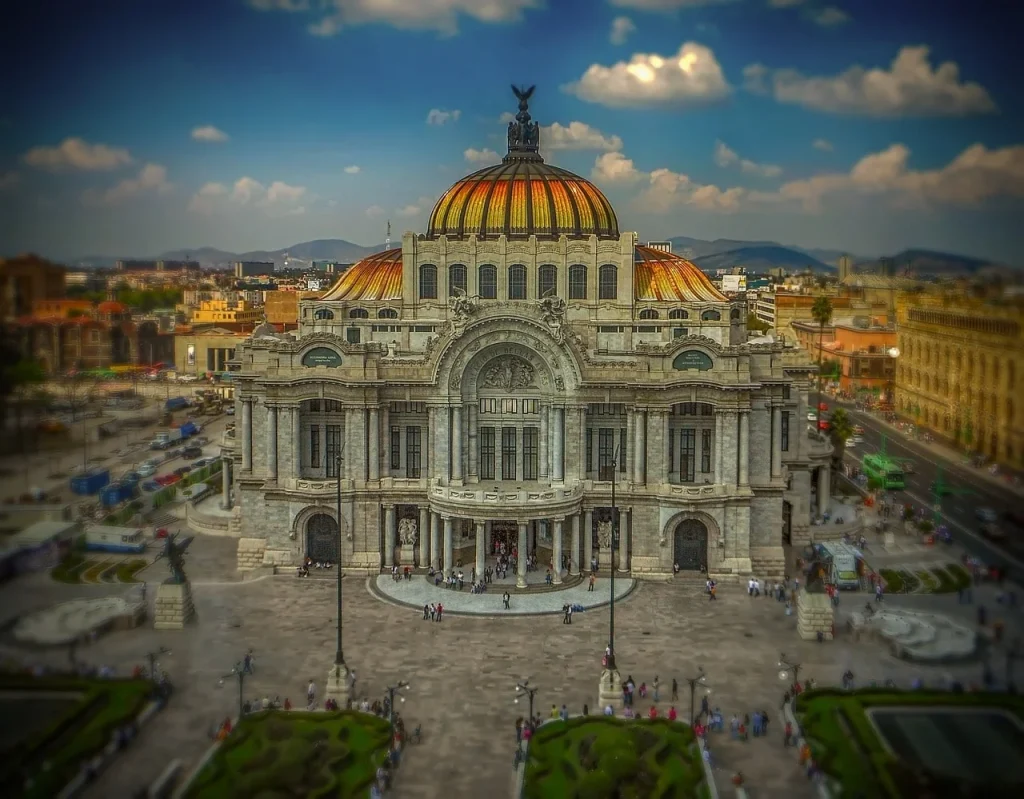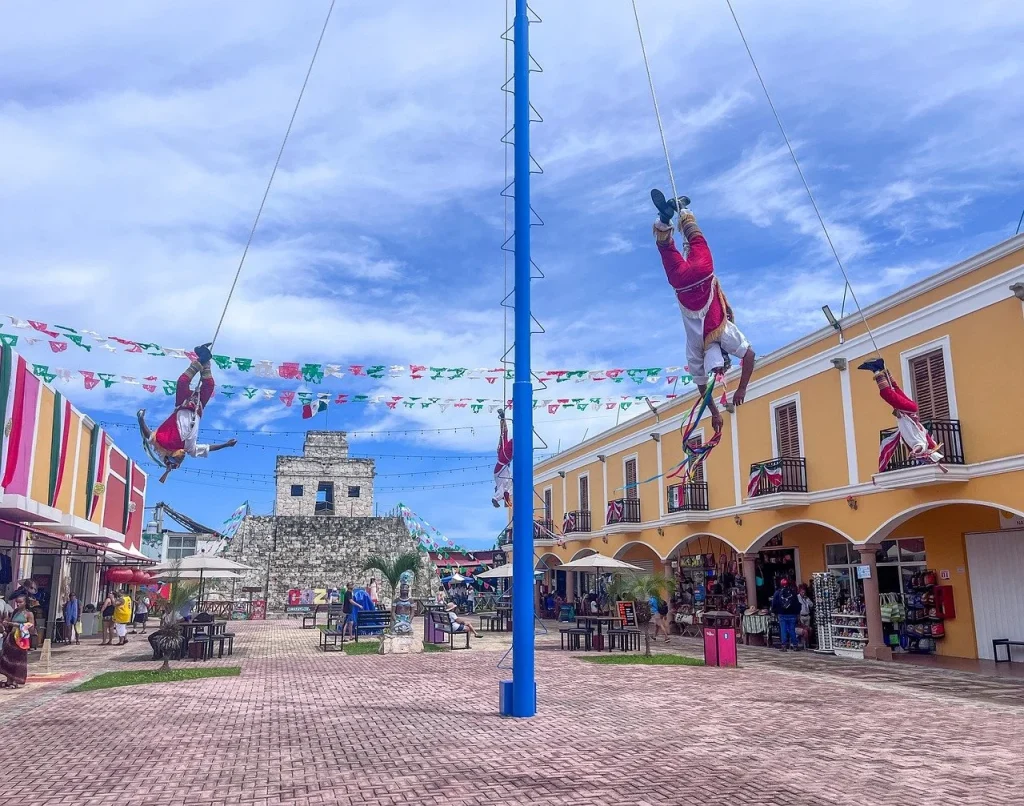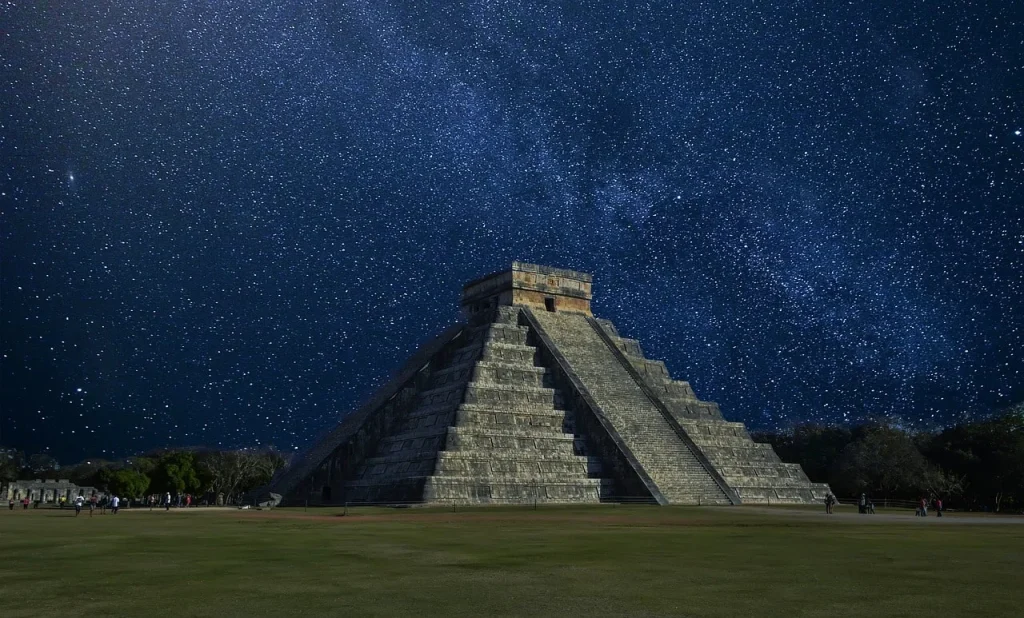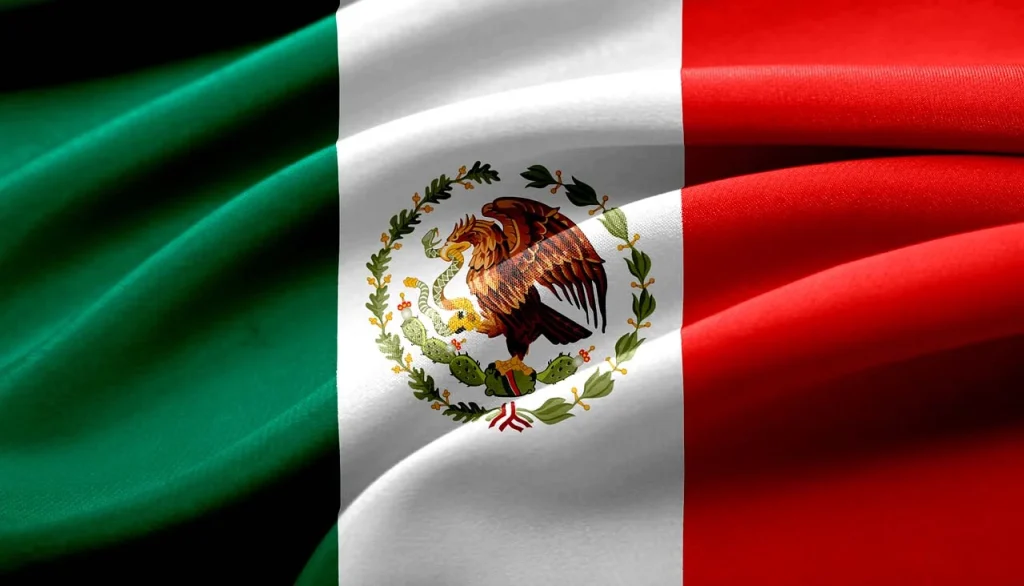What images come to mind when you think of Mexico? Maybe sandy beaches, towering pyramids, or delicious tacos? While these are all part of Mexico’s charm, there’s so much more to explore about this captivating country.
In our journey through the facts, we’ll introduce you to lesser-known aspects of its culture, history, and people. Let’s embark on this exciting adventure and see Mexico in a whole new light!
Mexico is a mosaic of different realities and beauties.
Enrique Peña Nieto
Mexico Facts
Let’s start our journey into the world of Mexico as we explore its rich culture, history, and geography. Read carefully and gear up for the quiz at the end to test your knowledge and prove yourself as an expert.
- The Yucatán Peninsula has a vast network of underwater caves that stretch for over 1,000 kilometers.
- Monarch butterflies migrate from Canada to the Michoacán forests, traveling over 3,000 miles each year.
- The world’s largest pyramid by volume, the Great Pyramid of Cholula, is located in Puebla.
- There are over 68 indigenous languages spoken, including Náhuatl, Maya, and Mixtec.
- Tequila can only be produced in the state of Jalisco and a few other regions due to strict regulations.
- The Popocatépetl volcano is one of the most active volcanoes in the world and often has smoke plumes visible from Mexico City.
- Chocolate originates from the ancient Mesoamerican cultures that inhabited the area, who used cacao beans to make a bitter drink.
- The cenotes in the Yucatán Peninsula were used by the Mayans for ritualistic purposes and considered sacred.
- Day of the Dead celebrations blend Aztec and Spanish traditions, creating a unique cultural festival.
- The ancient city of Teotihuacan was one of the largest cities in the world during its peak around 450 AD.
- Frida Kahlo’s Blue House in Coyoacán is now a museum dedicated to her life and work.
- The Baja California Peninsula is home to the world’s second longest peninsula, stretching over 1,200 kilometers.
- There are over 120 magical towns, known as Pueblos Mágicos, recognized for their historical and cultural significance.

- Xochimilco, a network of canals in Mexico City, is a remnant of the vast water transport system used by the Aztecs.
- The ancient ball game, known as Ulama, is still played in some regions and is considered one of the oldest sports in the world.
- The cuisine has been recognized by UNESCO as an intangible cultural heritage of humanity.
- Over 30% of the country’s electricity comes from renewable sources, including wind and solar power.
- The Sierra Madre mountain ranges create diverse climates and ecosystems across the country.
- The world’s largest underwater sculpture museum, MUSA, is located off the coast of Cancun and Isla Mujeres.
- Chapultepec Forest in Mexico City is one of the largest city parks in the Western Hemisphere.
- Cenotes are natural sinkholes resulting from the collapse of limestone bedrock, revealing groundwater underneath.
- The Mayan ruins of Uxmal are known for their unique architectural style, which includes intricate mosaics and geometric patterns.
- The state of Oaxaca is home to the Tree of Tule, one of the oldest and widest trees in the world.
- Axolotls, rare amphibians that can regenerate their limbs, are native to the lakes of central Mexico.
- The city of Guanajuato has an extensive network of underground tunnels originally built to control floodwaters.
- The island of Isla Holbox is a car-free haven known for its laid-back atmosphere and beautiful beaches.
- The Monarch Butterfly Biosphere Reserve is a UNESCO World Heritage site protecting the wintering habitats of millions of butterflies.
- The Mayan calendar is renowned for its accuracy and complexity, predicting solar eclipses and other astronomical events.

- Oaxaca is famous for its mole sauces, which come in various flavors and colors, including black, red, and green.
- Mexico is the leading producer of silver, contributing to nearly one-fifth of the world’s total output.
- The town of Tequila, where the spirit originated, has a volcanic landscape that provides the perfect conditions for growing blue agave.
- The copper canyon in Chihuahua is a group of six canyons larger and deeper than the Grand Canyon.
- Mexico City was built on the ruins of Tenochtitlán, the capital of the Aztec Empire.
- The “Ring of Cenotes” in Yucatán is a ring-shaped formation of over 6,000 cenotes.
- Puebla’s Baroque architecture is so distinctive that the city center has been designated a UNESCO World Heritage site.
- Mezcal, a traditional Mexican spirit, is made from the heart of the agave plant and often has a smoky flavor.
- The Tarahumara people of the Copper Canyon region are known for their incredible long-distance running abilities.
- In the state of Veracruz, the ancient city of El Tajín is renowned for its unique pyramid structures with niches.

- The national dish, Chiles en Nogada, features green, white, and red ingredients to represent the colors of the flag.
- The island of Cozumel is home to one of the largest coral reef systems in the world, part of the Mesoamerican Barrier Reef.
- The state of Michoacán is famous for its traditional dance, the Danza de los Viejitos, performed during various festivities.
- Mexico has the largest Spanish-speaking population in the world, with over 120 million speakers.
- In Oaxaca, the Guelaguetza festival celebrates indigenous cultures with traditional music, dance, and clothing.
- The Sierra Gorda Biosphere Reserve in Querétaro is known for its diverse ecosystems, ranging from deserts to rainforests.
- Lake Chapala, the largest freshwater lake, is a vital habitat for migratory birds and local wildlife.
- The town of Taxco is renowned for its silver jewelry and colonial architecture.
- Los Cabos, at the southern tip of the Baja Peninsula, is a premier destination for whale watching from December to April.
- The Riviera Maya is home to some of the most well-preserved Mayan ruins, including Tulum and Coba.
- Huichol art, known for its vibrant colors and intricate beadwork, is a significant cultural expression of the Huichol people.
- The city of Puebla is famous for its Talavera pottery, which has been made using traditional methods for over 400 years.
Mexico Myths

Equipped with the facts, we’re ready to debunk some myths about Mexico. Let’s clear up these misconceptions and find the truth.
- Mexico is a Desert
Mexico’s geography is diverse, including lush rainforests, vibrant coastal areas, and mountainous regions. The misconception of Mexico as solely desert overlooks places like the tropical Yucatán Peninsula and the green highlands of Chiapas. - Mexico is Dangerous for Tourists
While some areas face safety issues, most tourist destinations in Mexico, such as Cancun, Mexico City, and Los Cabos, are considered safe. Travelers are encouraged to stay informed and take common-sense precautions. - Mexican Food is Just Tacos and Burritos
Mexican cuisine is incredibly varied, including dishes like mole, tamales, and ceviche. Each region boasts unique culinary traditions and ingredients, reflecting the country’s rich cultural heritage. - Everyone in Mexico Wears a Sombrero
Sombreros are traditional hats, but they are not commonly worn by Mexicans in everyday life. This stereotype is often perpetuated by media but does not reflect current fashion trends or cultural norms. - Mexico is a Poor Country
Mexico has a mixed economy, being one of the largest in Latin America. The country features a growing middle class and significant industrial and technological sectors, although wealth distribution remains uneven.
Mexico Quotes

We continue our journey with the quotes. Here is a list of my favorite ones. Feel free to share more in the comments so I can add them to the list.
I paint flowers so they will not die.
Frida Kahlo
Frida Kahlo, one of Mexico’s most iconic painters, used this statement to express her passion for capturing the ephemeral beauty of nature in her art, tying her work deeply to her Mexican heritage.
In Mexico you have death very close. That’s why we are strong believers in life.
Salma Hayek
Salma Hayek, a Mexican actress, reflects on the cultural attitude towards death in Mexico, which celebrates life and embraces mortality, notably through traditions like the Day of the Dead.
Mexico extends beyond its borders.
Vicente Fox
Vicente Fox, another former President of Mexico, used this quote to describe the influence and presence of Mexican culture around the world, especially through its diaspora.
One must still have chaos in oneself to be able to give birth to a dancing star.
Friedrich Nietzsche
Although Nietzsche was not Mexican, this quote has been embraced in Mexican philosophical thought to describe the vibrant and sometimes chaotic spirit of Mexico that leads to dynamic cultural expressions.
I believe that the great city of the entire world is Mexico City; that’s my favorite place.
Jack Kerouac
American novelist Jack Kerouac expressed his fondness for Mexico City, highlighting it as a vibrant and culturally rich urban landscape, which deeply influenced his writing and views during his travels.
Mexico FAQ

The quotes about Mexico set the stage perfectly. Now, it’s time for the final section before the quiz, the FAQs.
- What is the capital of Mexico?
The capital of Mexico is Mexico City. It’s one of the largest cities in the world and a vibrant cultural hub. - What language is spoken in Mexico?
Spanish is the official language of Mexico. However, there are also 68 indigenous languages recognized by the government. - What is Mexican cuisine known for?
Mexican cuisine is famous for its bold flavors and fresh ingredients, featuring dishes like tacos, enchiladas, guacamole, and tamales. Don’t forget to try authentic Mexican street food! - Is it safe to travel to Mexico?
Many parts of Mexico are safe for tourists, especially popular destinations like Cancun, Mexico City, and Oaxaca. Always check travel advisories and take standard precautions. - What currency is used in Mexico?
The Mexican Peso (MXN) is the official currency. Credit cards are widely accepted in cities, but it’s good to have cash for small purchases and in rural areas.
Mexico Trivia

Let’s see how much you really know about Mexico! Jump into this quiz, but beware, a zero score will have you learning how to roll the perfect burrito for the whole office!
Conclusion
In summary, Mexico’s charm lies in its diversity and vibrancy. From the bustling streets of its cities to the tranquil beauty of its natural landscapes, there’s always something to explore. The rich cultural heritage, evident in festivals and arts, captivates all who visit.
Food lovers find paradise in Mexico’s flavorful cuisine, while history buffs enjoy its ancient sites. It invites you to dive into its lively culture and warm hospitality. Till next time, stay curious and explore more. Cheers.
2 Sources Used For This Article

